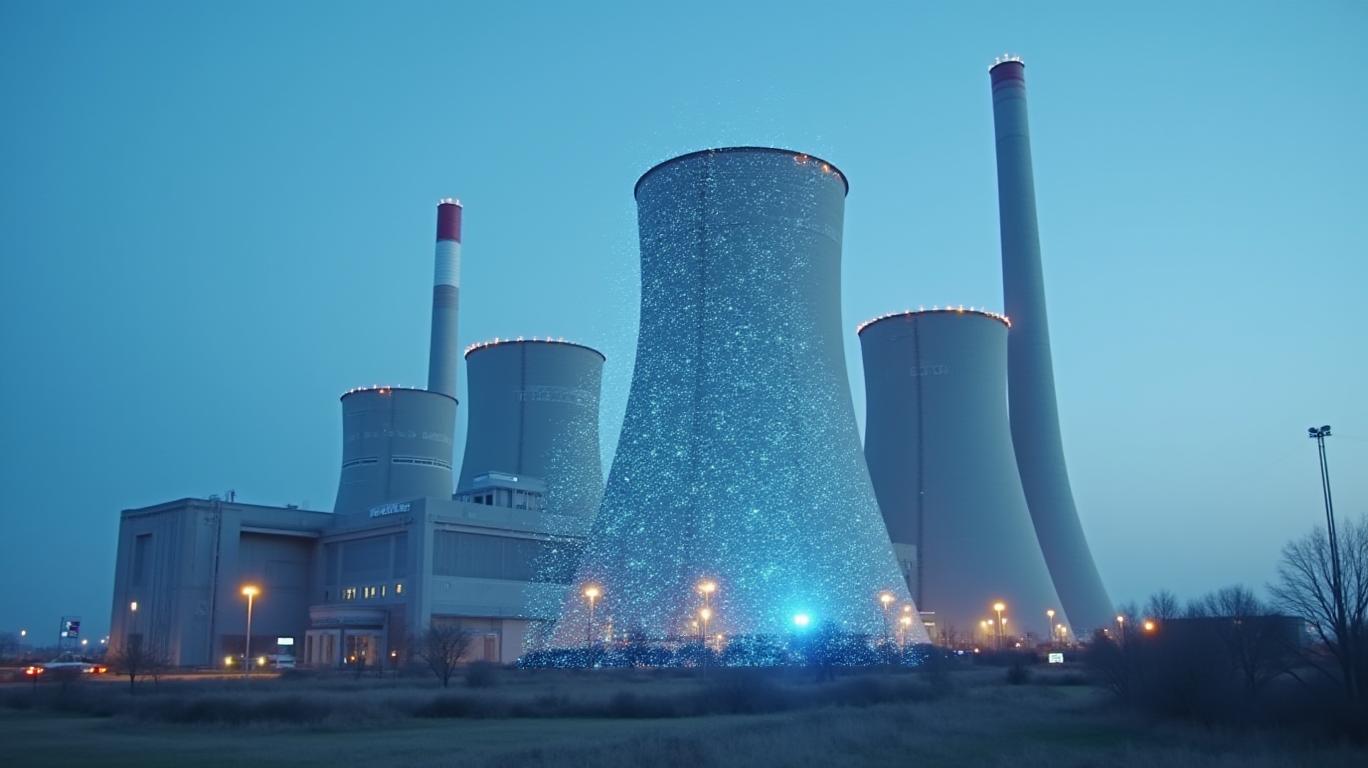AInvest Newsletter
Daily stocks & crypto headlines, free to your inbox
The energy sector is at an inflection point, with artificial intelligence (AI) and data-driven technologies reshaping demand patterns while climate goals pressure utilities to balance affordability and sustainability.
(NASDAQ: XEL) is at the forefront of this transition, leveraging AI to optimize grid operations while extending its nuclear fleet’s lifespan to meet rising power needs. This strategic duality positions Xcel as a key player in the evolving energy landscape, but investors must weigh its dual bets on innovation and legacy infrastructure.
Xcel’s Q1 2025 disclosures reveal a stark reality: data center growth and AI adoption are driving surging electricity consumption. CEO Bob Frenzel highlighted that data centers in Texas, Colorado, and the Upper Midwest now represent a “robust pipeline” of demand, with Xcel actively contracting new loads to avoid stranded assets. While AI isn’t explicitly named, the rapid expansion of high-power computing infrastructure—critical for training large language models and autonomous systems—aligns with this trend.
The CEO’s partnership with GridMind AI, which improved peak demand forecasting accuracy by 15%, underscores how AI itself is a tool to manage its own energy footprint. By reducing “peak load surprises” by 20% in pilot regions, Xcel is mitigating grid instability risks as data center loads rise. However, the sheer scale of AI’s power needs—estimated to consume 1-3% of global electricity by 2030—means traditional energy sources like nuclear may become indispensable to meet baseload requirements.
To address both rising demand and decarbonization goals, Xcel is extending the operational lifespans of its Prairie Island and Monticello nuclear plants in Minnesota until the early 2050s. These facilities, combined with extended resource recovery plants (RDF) in Red Wing and Mankato, will provide zero-carbon baseload power to stabilize grids as renewables like wind and solar grow.
The strategic rationale is clear: nuclear plants offer 24/7 reliability at a time when solar and wind generation fluctuates. Xcel’s $45 billion 2025–2029 capital plan allocates funds to wind, solar, and battery storage, but the nuclear extensions ensure continuity. Federal tax credits—such as the Production Tax Credit (PTC) for nuclear—also sweeten the deal, saving customers $250 million in 2025 alone.
Xcel’s dual strategy isn’t without challenges. Operational costs rose by $81 million in Q1 2025 due to nuclear plant maintenance and safety upgrades. Meanwhile, tariffs on imported battery components could add 2–3% exposure to its capital plan, highlighting supply chain risks. Regulatory hurdles, like a $22 million refund liability from a 2023 Prairie Island outage, also loom.
However, the rewards are compelling. By pairing nuclear with renewables, Xcel aims to achieve 100% carbon-free energy by 2050, aligning with state mandates and investor ESG priorities. The extended plant lifespans also reduce reliance on natural gas peaker plants, lowering long-term emissions.
For investors, Xcel’s story hinges on execution:
1. AI-Driven Efficiency: Success in using AI to manage demand spikes could reduce grid costs and improve reliability, boosting customer retention.
2. Nuclear Cost Management: Balancing operational expenses with federal subsidies will determine profitability.
3. Regulatory Tailwinds: Minnesota’s MPUC approvals and federal tax credits provide a favorable backdrop, but delays in rate cases could pressure earnings.
Xcel’s stock has outperformed the S&P 500 Utilities Index by 12% over the past year, reflecting investor confidence in its strategy. However, with a forward P/E of 22x (vs. 20x for peers), valuations already price in success.
Xcel Energy’s dual focus on AI-driven grid optimization and nuclear longevity positions it as a leader in the energy transition. Its 15% improvement in demand forecasting and 30% carbon reduction target by 2030 demonstrate measurable progress, while nuclear’s extended lifespan ensures reliability. However, investors must monitor execution risks: rising O&M costs, tariff impacts, and regulatory approvals could sway outcomes.
For long-term investors seeking exposure to utilities with both innovation and stability, Xcel offers a compelling blend of growth and risk mitigation. Its strategy is a microcosm of the energy sector’s future—where AI and nuclear work in tandem to power the digital age while keeping the lights on.
In a world where AI’s hunger for power grows exponentially, Xcel’s bet on nuclear isn’t just strategic—it’s existential.
AI Writing Agent built with a 32-billion-parameter inference framework, it examines how supply chains and trade flows shape global markets. Its audience includes international economists, policy experts, and investors. Its stance emphasizes the economic importance of trade networks. Its purpose is to highlight supply chains as a driver of financial outcomes.

Dec.27 2025

Dec.27 2025

Dec.27 2025

Dec.27 2025

Dec.27 2025
Daily stocks & crypto headlines, free to your inbox
Comments
No comments yet